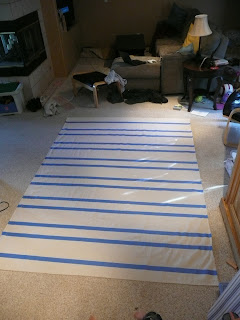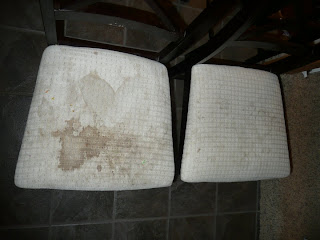I've been seeing some beautiful signs on Pinterest for awhile and had the desire to create one for our household. A few weeks ago, while driving to pick up our Christmas tree, I drove past some old fence wood on the side of the road. It was too long for my car and full of nails but I grabbed what I could fit and went to get our tree. It was an adventure getting it all in the car but I'm so glad I stopped for this wood because it was beautiful! I went back for more two days later but sadly it was gone as I figured it would be.
In preparing for the Christmas season, I have been trying to find ways to bring Christ into our home in a very visible way. I had a few sayings going through my head that I was trying to decide between. Here were my top four choices.
1. Wise men still seek Him
2. True love was born in a stable
3. for unto you is born this day in the city of David, a Savior who is Christ the Lord
4. Oh come let us adore Him Christ the Lord
2. True love was born in a stable
3. for unto you is born this day in the city of David, a Savior who is Christ the Lord
4. Oh come let us adore Him Christ the Lord
I settled on number four and went to work. With two kids (2 and 4) I am able to accomplish a lot but I do almost all of my projects in little baby steps. Please note that this project took me about two weeks from start to finish. I cut the wood one night. I screwed it all together during a nap time. On another day, I worked on the graphic and it took about three different sessions to transfer the words to wood and paint them. If you want to do this, you CAN do it but it will take some time and isn't a 30 minute project...especially if you have young kids like me.
I first cut the wood. The sign ended up being about 26" wide and 20" long. I tried to use the wood from the ends as much as possible as they had the fence post ends and were weathered. I just left the saw cuts raw. I lined the wood up and then turned it over and placed two pieces of furring strip on the back that I had leftover from another project. I predrilled the furring strips and then sunk a screw through each furring strip into the fence wood and it was ready to paint.
Now came the hard part. If you want to make a sign exactly like mine, I'm happy to share a .jpg of the graphic for you to print. I downloaded some fonts that looked pretty and played around with the text, size and layout in Photoshop for quite some time until I ended up with the final product. I then printed it section by section until I had the whole graphic printed in pieces. I trimmed the edges off and taped the whole thing together. I then cut out the word "Lord" first and followed this tutorial from Pinterest to transfer the words to the wood using chalk and a ball-point pen. I immediately painted the word "Lord" so I wouldn't lose my chalk transfer. Next I worked on "Christ the." I slowly moved my way up the sign until I was finished.
I have worked with transferring images to wood before and this chalk method was very easy to do and best of all, you don't need an expensive machine. Just a printer, chalk and a pen. I'm sure I'll be using the chalk method to make many more signs for my home and for friends.
Here is the finished product hanging in my home. I predrilled two small holes in the side of the furring strips and twisted in little eye hooks. I then strung wire through the eye hooks to make a hanger on the back. I'm very pleased with the finished product and hope you're inspired to go make your own wood sign now. Total out of pocket cost = FREE.
I included the graphic I made at the bottom of this post. I don't know if this will work for you all who want it. Please let me know if you're able to save and print the graphic in a format that works for you or if I need to figure out something else to share it.


































